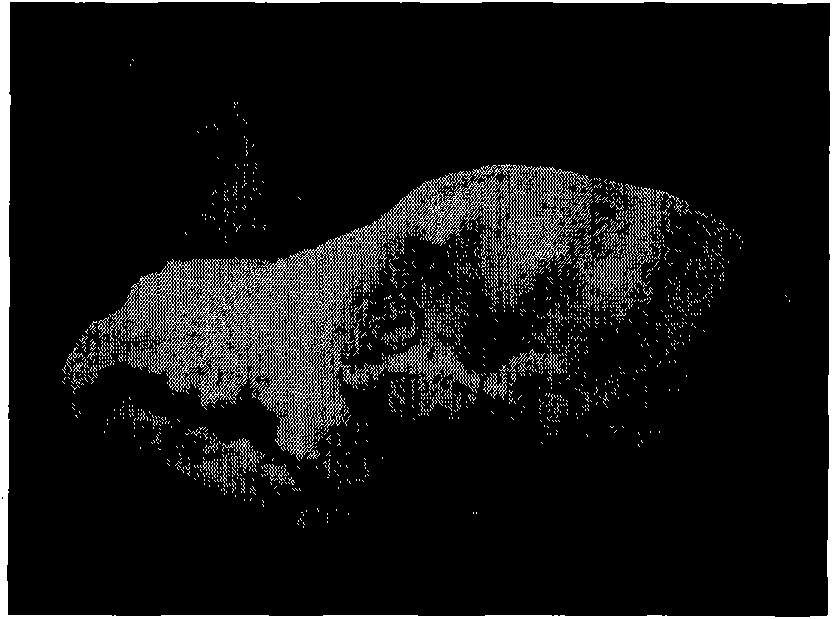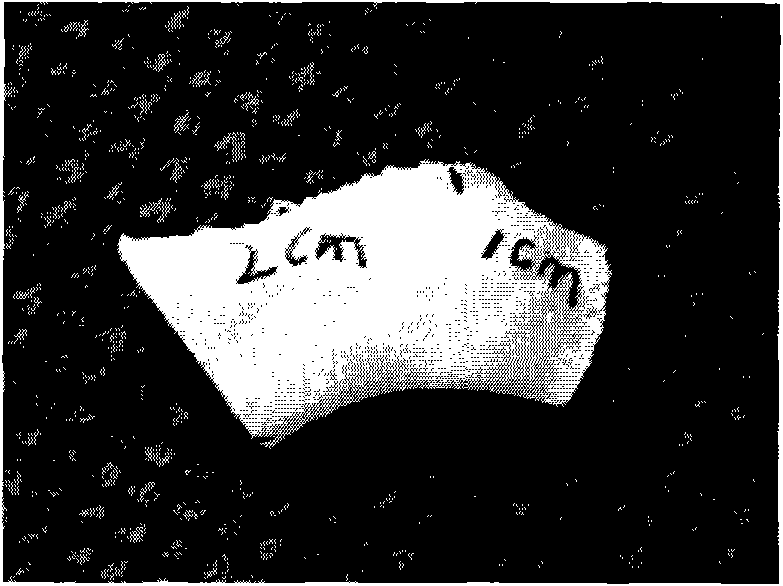Orbital margin tissue engineering bone and application thereof
A technology of tissue engineering bone and tissue engineering, applied in bone implants, medical science, prostheses, etc., to achieve the effect of saving experimental time, convenient operation, and non-immunogenicity
- Summary
- Abstract
- Description
- Claims
- Application Information
AI Technical Summary
Problems solved by technology
Method used
Image
Examples
Embodiment 1
[0044] Construction of canine orbital rim tissue-engineered bone in vitro
[0045] 1. BMSCs in vitro osteogenic induction culture and detection
[0046] BMSCs were cultured in α-MEM culture medium supplemented with β-glycerol phosphate, dexamethasone and ascorbic acid for in vitro osteogenic induction, and uninduced BMSCs were used as controls to detect cell morphology and osteogenic activity. The results showed that the cell growth cycle and cell proliferation of canine BMSCs were not affected after osteogenic induction culture, and they could be passed on for more than 10 generations. Calcium nodules stained strongly positive; express osteogenic marker proteins (OCN, OPN, BSP, Cbfa1, type I collagen, etc.) and osteogenic related genes (OCN, OPN, BSP). The ALP staining of the uninduced BMSCs was weakly positive, the calcium nodule staining was negative, and the expression levels of osteogenic marker proteins and related genes were lower than those of the induced group.
[0...
Embodiment 2
[0052] The Experiment of Heterotopic Osteogenic Ability of Orbital Marginal Tissue-Engineered Bone Constructed in Vitro
[0053] According to the method of Example 1, autologous induced BMSCs and β-TCP scaffold materials were combined in vitro to construct tissue engineered bone.
[0054] Three pieces of materials were subcutaneously implanted on the back of each dog: one piece of autologous induced BMSCs combined with TCP, one piece of autologous uninduced BMSCs combined with TCP, and one piece of simple TCP material. Surgical method: After the experimental animal dog was anesthetized, a small incision of 1.5 cm was made in three separate areas on the back of the dog, the surrounding subcutaneous tissue was fully freed, and the material was implanted, and the incision was sutured intermittently with No. 1 suture.
[0055] The specimens were taken out at 1 month, 2 months, and 3 months after the material implantation, and 9 pieces of subcutaneous specimens were taken from the ...
Embodiment 3
[0058] Experiment of Orbital Margin Tissue Engineering Bone in Situ Repairing Canine Orbital Margin Bone Defect
[0059] According to the method of Example 1, autologous induced BMSCs and β-TCP scaffold materials were combined in vitro to construct tissue engineered bone.
[0060] Establishment of bone defect model of canine infraorbital rim: skin incision was made on the lower eyelid, subcutaneous tissue and muscle were separated suddenly, the infraorbital rim and zygomatic arch were fully exposed, and the periosteum was incised and peeled off with a dissector. According to the location and size of the defect in the computer-aided design, a segmental bone defect with a length of about 25 mm was made from the medial infraorbital rim to the zygomatic arch using a chainsaw, and the periosteum at the defect was removed. Orbital rim tissue-engineered bone constructed by autologous induced BMSCs and β-TCP was implanted, and a small hole was drilled with an electric drill at the two...
PUM
| Property | Measurement | Unit |
|---|---|---|
| Inoculation density | aaaaa | aaaaa |
Abstract
Description
Claims
Application Information
 Login to View More
Login to View More - R&D
- Intellectual Property
- Life Sciences
- Materials
- Tech Scout
- Unparalleled Data Quality
- Higher Quality Content
- 60% Fewer Hallucinations
Browse by: Latest US Patents, China's latest patents, Technical Efficacy Thesaurus, Application Domain, Technology Topic, Popular Technical Reports.
© 2025 PatSnap. All rights reserved.Legal|Privacy policy|Modern Slavery Act Transparency Statement|Sitemap|About US| Contact US: help@patsnap.com



